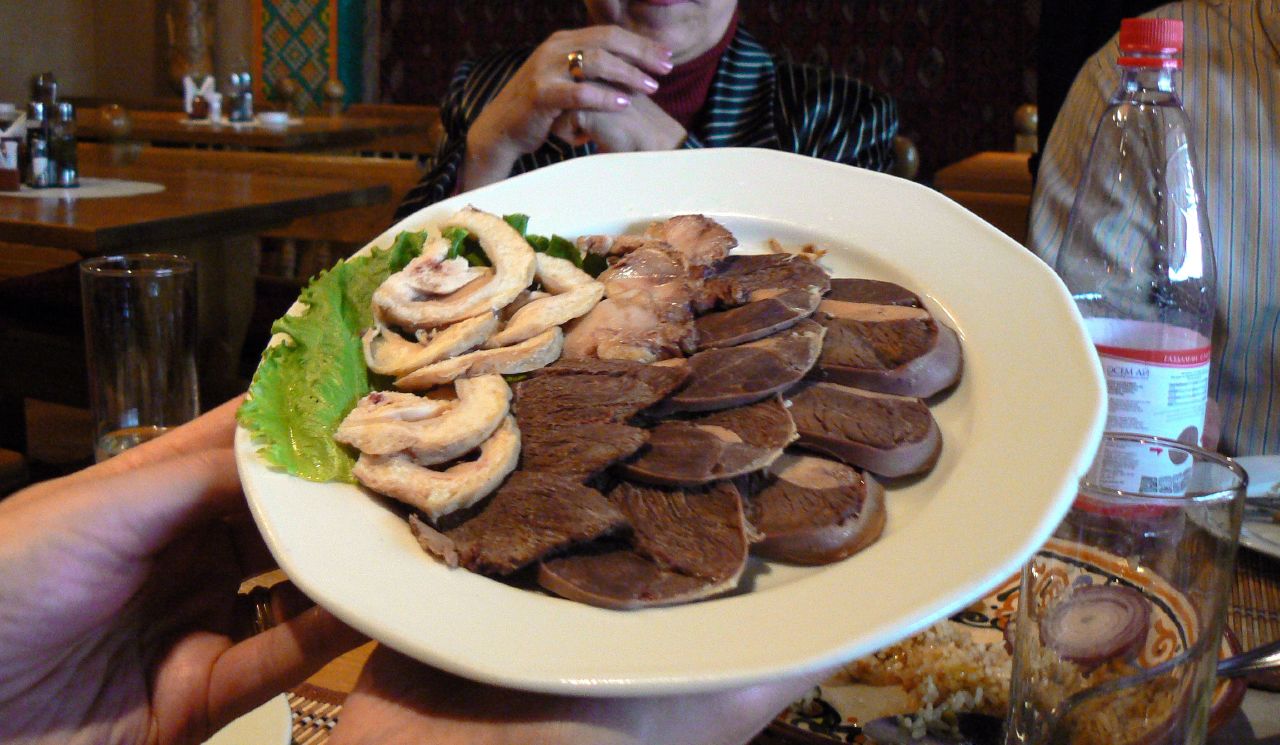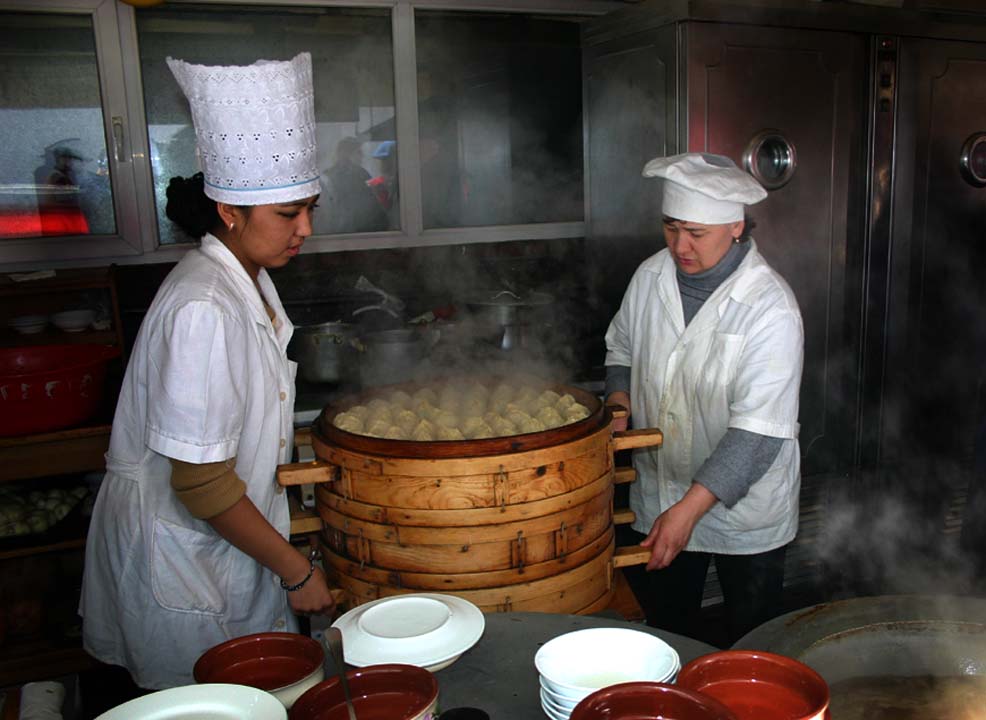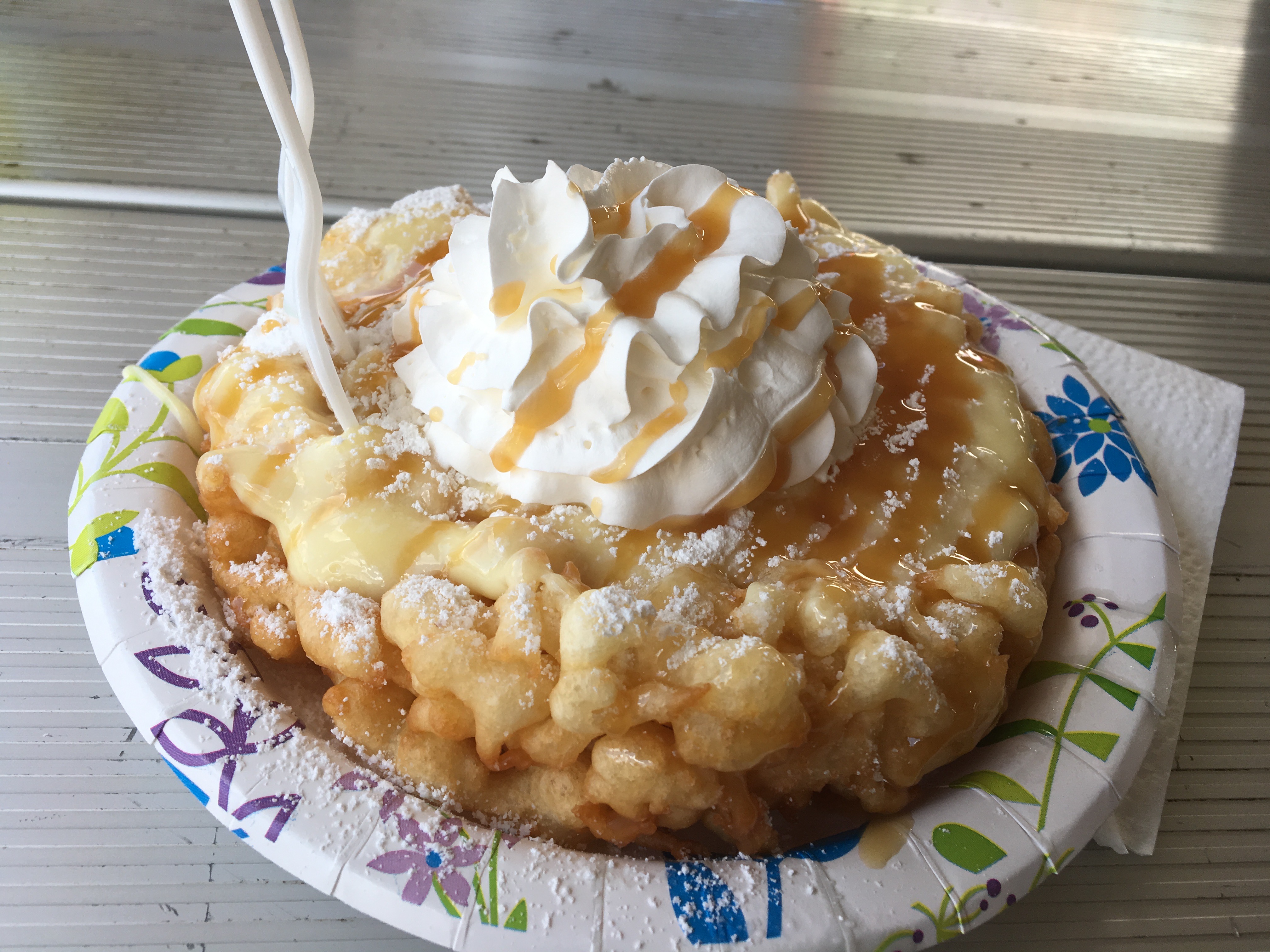|
Ο΅ΟΛkΟßΟΛk
Ο΅ΟΛkΟßΟΛk (pronounced , YaΟ±alif: ''C…ôkc…ôk'', Tatar Cyrillic: –ß”ô–Κ―΅”ô–Κ or ―΅”ô–Κ-―΅”ô–Κ, ''ΟßΟΛk-ΟßΟΛk''; tg, ―΅–Α“¦―΅–Α“¦, ''chaqchaq''; ky, ―΅–Α–Κ-―΅–Α–Κ; uz, chak-chak; russian: ―΅–Α–Κ-―΅–Α–Κ, ''chak-chak''; ba, ―¹”ô–Κ-―¹”ô–Κ, ''sΟΛk-sΟΛk'', Kazakh "―΅–Α–Κ-―΅–Α–Κ", frequently anglicized as chak-chak (), is a Tatar cuisine#Sweets, Tatar sweet. It is particularly popular in Tatarstan and Bashkortostan, and is recognized as Tatarstan's national sweet in Russian Federation. Ο΅ΟΛkΟßΟΛk is made from unleavened dough cut and rolled into hazelnut-sized balls, which are then Deep frying, deep-fried in oil. Optionally hazelnuts or dried fruit (e.g.apricot and raisin) are added to the mixture. The fried balls are stacked in a mound in a special mold and drenched with hot honey. After cooling and hardening, ΟßΟΛkΟßΟΛk may be optionally decorated with hazelnuts and dried fruits. Traditional wedding ΟßΟΛkΟßΟΛk is of bigger size and is often covered with Candy, candies and dragΟ© ... [...More Info...] [...Related Items...] OR: [Wikipedia] [Google] [Baidu] |
Tatar Cuisine
Tatar cuisine is primarily the cuisine of the Volga Tatars, who live in Tatarstan, Russia, and surrounding areas. History The cuisine of the Volga Tatars takes its origin from the cuisine of the Volga Bulgars, who once were nomads, but nearly 1500 years ago turned to agriculture and assimilated into local agricultural societies. Tatar cuisine was influenced by the surrounding peoples βÄ™ Russians, Mari, Udmurts, and also peoples of Central Asia, especially Uzbeks. Dishes such as ''pilaw'' (pilaf), halvah (''xΟΛlwΟΛ''), and sherbet (''≈üirbΟΛt'') entered long ago into the Tatar culture. Tatars became familiar with many elements of Russian cuisine early in their history. However, culinary influences and greater variety of products have not changed the basic ethnic features of Tatar cuisine but have instead made it more diverse. Geography and nature were also instrumental in the shaping of the Tatar cuisine. The location of the Tatars at the border of two geographical zonesβÄîthe ... [...More Info...] [...Related Items...] OR: [Wikipedia] [Google] [Baidu] |
Kazakh Cuisine
Traditional Kazakh cuisine is the traditional food of the Kazakh people. It is focused on mutton and horse meat, as well as various milk products. For hundreds of years, Kazakhs were herders who raised fat-tailed sheep, Bactrian camels, and horses, relying on these animals for transportation, clothing, and food. The cooking techniques and major ingredients have been strongly influenced by the nation's nomadic way of life. For example, most cooking techniques are aimed at long-term preservation of food. There is a large practice of salting and drying meat so that it will last, and there is a preference for sour milk, as it is easier to save in a nomadic lifestyle. Meat in various forms has always been the primary ingredient of Kazakh cuisine, and traditional Kazakh cooking is based on boiling. Horse and mutton are the most popular forms of meat and are most often served in large uncut pieces which have been boiled. Kazakhs cared especially for horses which they intended to slaughte ... [...More Info...] [...Related Items...] OR: [Wikipedia] [Google] [Baidu] |
Kazakhstani Cuisine
Traditional Kazakh cuisine is the traditional food of the Kazakh people. It is focused on mutton and horse meat, as well as various milk products. For hundreds of years, Kazakhs were herders who raised fat-tailed sheep, Bactrian camels, and horses, relying on these animals for transportation, clothing, and food. The cooking techniques and major ingredients have been strongly influenced by the nation's nomadic way of life. For example, most cooking techniques are aimed at long-term preservation of food. There is a large practice of salting and drying meat so that it will last, and there is a preference for sour milk, as it is easier to save in a nomadic lifestyle. Meat in various forms has always been the primary ingredient of Kazakh cuisine, and traditional Kazakh cooking is based on boiling. Horse and mutton are the most popular forms of meat and are most often served in large uncut pieces which have been boiled. Kazakhs cared especially for horses which they intended to slaughte ... [...More Info...] [...Related Items...] OR: [Wikipedia] [Google] [Baidu] |
Funnel Cake
Funnel cake ( Pennsylvania German: ''Drechderkuche'') is a regional sweet food popular in North America, found mainly at carnivals and amusement parks. It is made by deep-frying batter. History The concept of the funnel cake dates back to the early medieval Persian and Arab world as ''zalabiyeh'', where similar yeast-risen dishes were first prepared, and later spread to Europe. Pennsylvania Dutch immigrants brought the yeast dish, known as ''drechderkuche'', to America, and around 1879, they developed the baking powder version along with its new name, funnel cake. Preparation Funnel cakes are made by pouring batter into hot cooking oil in a circular pattern and deep frying the overlapping mass until golden-brown. The batter is commonly poured through a funnel, creating its texture and giving it its name. When made at concession stands, a pitcher with an integral funnel spout is employed. Alton Brown recommends they be made with choux pastry, which expands from steam produced ... [...More Info...] [...Related Items...] OR: [Wikipedia] [Google] [Baidu] |
Sachima
Sachima is a sweet snack in Chinese cuisine made of fluffy strands of fried batter bound together with a stiff sugar syrup, and of an appearance somewhat similar to American Rice Krispies Treats. It originated in Manchuria and is now popular throughout China. Its decoration and flavor vary in different regional Chinese cuisines, but the appearance of all versions is essentially the same. Regional variations Manchu In Northeastern Chinese cuisine, Manchu cuisine originally, ''sachima'' is a sweet snack. It mainly consists of flour, butter, and Rock candy, rock sugar. It is now popular in mainland China among children and adults. Cantonese The Cantonese cuisine, Cantonese pastry version of ''sachima'' is slightly sweet. It is also made of essentially the same ingredients as the other varieties of ''sachima''. It is often sprinkled with sesame seeds, raisins or dried coconut. The Cantonese variety of ''sachima'' ranges from chewy to crunchy in texture. Most overseas Chinese, overs ... [...More Info...] [...Related Items...] OR: [Wikipedia] [Google] [Baidu] |
Struffoli
Struffoli also known as Honey Balls (; nap, struffule ) is a Neapolitan dish made of deep fried balls of sweet dough. The dough is used in many Italian sweet treats such as chiacchiere. For struffoli, the dough is formed in to balls about the size of marbles. Crunchy on the outside and light inside, struffoli are mixed with honey and other sweet ingredients and formed into mounds or rings. There are many different ways to flavour them, but the traditional way is to mix them in honey with ''diavulilli'' (nonpareils sprinkles), cinnamon, and bits of orange rind. Naming varies by region: in Calabria they are also known as ''scalilli'', and in Abruzzo ''cicerchiata''. They are often served at Christmas and are sometimes served warm. History A similar dish is described by Archestratus, a Greek poet from Gela in Sicily. It was called ''enkris'' ( el, αΦêΈ≥ΈΚœ¹Έ·œ²) — a dough-ball fried in olive oil, which he details in his ''Gastronomy''; a work now lost, but partially preserved ... [...More Info...] [...Related Items...] OR: [Wikipedia] [Google] [Baidu] |
List Of Fried Dough Varieties
This is a list of fried dough foods. Many cultures have dishes that are prepared by deep frying dough in many various forms. Doughnuts are a type of fried dough food that are covered separately in the Wikipedia article List of doughnut varieties. Fried dough foods }, ur, Ί§Ό³έ¨Ί®έ¨, pa, ύ®€ύ®≤ύ©΅ύ®§ύ©Ä, te, ύΑ€ύΑΩύΑ≤ύ±΅ύΑ§ύΑΩ) or Jilapi ( bn, ύΠ€ύΠΩύΠ≤ύΠΨύΠΣύßÄ), this is a deep-fried sweet batter with rose water and saffron. Similar to Persian Zoolbiya. , - , Jersey wonders , , Jersey , These are also known as ''MΟ®rvelles'' , - , Jin deui , , China , A hollow fried pastry made of glutinous rice flour that is coated with sesame seeds and filled with a sweet filling. , - , Johnny Cake , , US Virgin Islands , Unleavened, golden-sweet, semi-flattened,fluffy-fried bread made primarily of white flour. , - , Kabkab , , Philippines , Deep-fried cassava wafers , - , Kachori , , India , Dough balls filled with different kinds of savoury stuffings like de-skinne ... [...More Info...] [...Related Items...] OR: [Wikipedia] [Google] [Baidu] |
Uzbek Cuisine
Uzbek cuisine shares the culinary traditions of peoples across Central Asia. There is a great deal of grain farming in Uzbekistan, so breads and noodles are of importance, and Uzbek cuisine has been characterized as "noodle-rich". Mutton is a popular variety of meat due to the abundance of sheep in the country and it is a part of various Uzbek dishes. Description Bread (''nan'' or ''non'') is a staple; it is baked in a ''tandur'', which is frequently a pot rather than the deep pit or oven of India and Afghanistan. Many varieties of rice are eaten. Potatoes were introduced by the Soviets, and some elder Uzbeks still refuse to eat them. The most popular meat is mutton. Beef is common, and goat is eaten only rarely. Horse meat is used as well; there are sausages made of horse meat, as is the case with many other Turkic peoples. Karakul sheep provide meat but also fat, particularly the fat from the tail end, called ''qurdiuq''. Uzbekistan's signature dish is palov (''plov'' or osh ... [...More Info...] [...Related Items...] OR: [Wikipedia] [Google] [Baidu] |
Kyrgyz Cuisine
Kyrgyz cuisine is the cuisine of the Kyrgyz, who comprise a majority of the population of Kyrgyzstan. The cuisine is similar in many aspects to that of their neighbors. Traditional Kyrgyz food revolves around mutton, beef and horse meat, as well as various dairy products. The preparation techniques and major ingredients have been strongly influenced by the nation's historically nomadic way of life. Thus, many cooking techniques are conducive to the long-term preservation of food. Mutton and beef are the favorite meats, although in modern times many Kyrgyz are unable to afford them regularly. Kyrgyzstan is home to many different nationalities and their various cuisines. In larger cities, such as Bishkek, Osh, Jalal-Abad, and Karakol, various national and international cuisines can be found. Non-Kyrgyz cuisines that are particularly common and popular in Kyrgyzstan include Uyghur, Dungan, Uzbek, and Turkish cuisines, representing the largest minorities in the country. Meat ... [...More Info...] [...Related Items...] OR: [Wikipedia] [Google] [Baidu] |
Bashkir Cuisine
Bashkir cuisine ( ba , –±–Α―à“Γ–Ψ―Ä―² –Α―à-“Μ―΄―É―΄, ba≈üqort a≈ü-hΡ±wΡ±(romanized)) is the traditional cuisine of the Bashkirs. Their way of life, and the predominance of cattle breeding contributed culture, traditions, and cuisine of the Bashkirs. Traditional dishes and products Bashkir dishes are distinguished by a small number of classic spices: only black and red pepper are used. Another feature of Bashkir dishes is the abundance of meat in all hot dishes and snacks. The love of Bashkirs for horse sausage ¬Ϊ kazy¬Μ and horse fat deserves special attention: Bashkirs love to eat horsemeat with thick slices of fat, washed down with sour broth Korot (fermented milk product), neutralizing the effects of such an amount of fat. The semi-nomadic way of life (cattle ranching) led to the formation of a wide range of long-term storage products. The bulk of Bashkir national dishes are boiled, dried and dried horse meat, lamb, dairy products, dried berries, dried cereals, honey. ... [...More Info...] [...Related Items...] OR: [Wikipedia] [Google] [Baidu] |
Gavvalu
Sweet shells ( te, ύΑ½ύΑΒύ±çύΑΒύΑ≤ύ±¹, ''gavvalu'') is one of the typical Indian sweets made in Andhra Pradesh, India. It is a mixture (dough) of plain flour/maida and water or milk. The prepared dough is shaped into small rounds, which are flattened and rolled (on a special tool) so as to take the shape of gavvalu (cowrie shells). These shells are fried in oil or ghee and soaked in sugar or jaggery syrup. See also * Kidyo References {{Doughnut Indian desserts Andhra cuisine Indian rice dishes Deep fried foods ... [...More Info...] [...Related Items...] OR: [Wikipedia] [Google] [Baidu] |
Lokma
Lokma, also known by their Greek name, loukoumades, are pastries made of leavened and deep fried dough balls, soaked in syrup or honey, sometimes coated with cinnamon or other ingredients. The dish was described as early as the 13th century by al-Baghdadi as ''luqmat al-qΡ¹di'' (), "judge's morsels". Etymology The Arabic word () (plural ), means ''morsel'', ''mouthful'', or ''bite''. The dish was known as () or "judge's morsels" in 13th century Arabic cookery books, and the word ''luqma'' or ''loqma'' by itself has come to refer to it. The Turkish name for the dish, , is derived from the Arabic, as is the Greek name (). History The recipe for ''Luqmat al-Qadi'', yeast-leavened dough boiled in oil and doused in honey or sugar syrup with rosewater, dates back to at least the early medieval period and the 13th-century Abbasid Caliphate, where it is mentioned in several of the existent cookery books of the time. It is also mentioned in the ''One Thousand and One Nights'', in ... [...More Info...] [...Related Items...] OR: [Wikipedia] [Google] [Baidu] |





.jpg)

